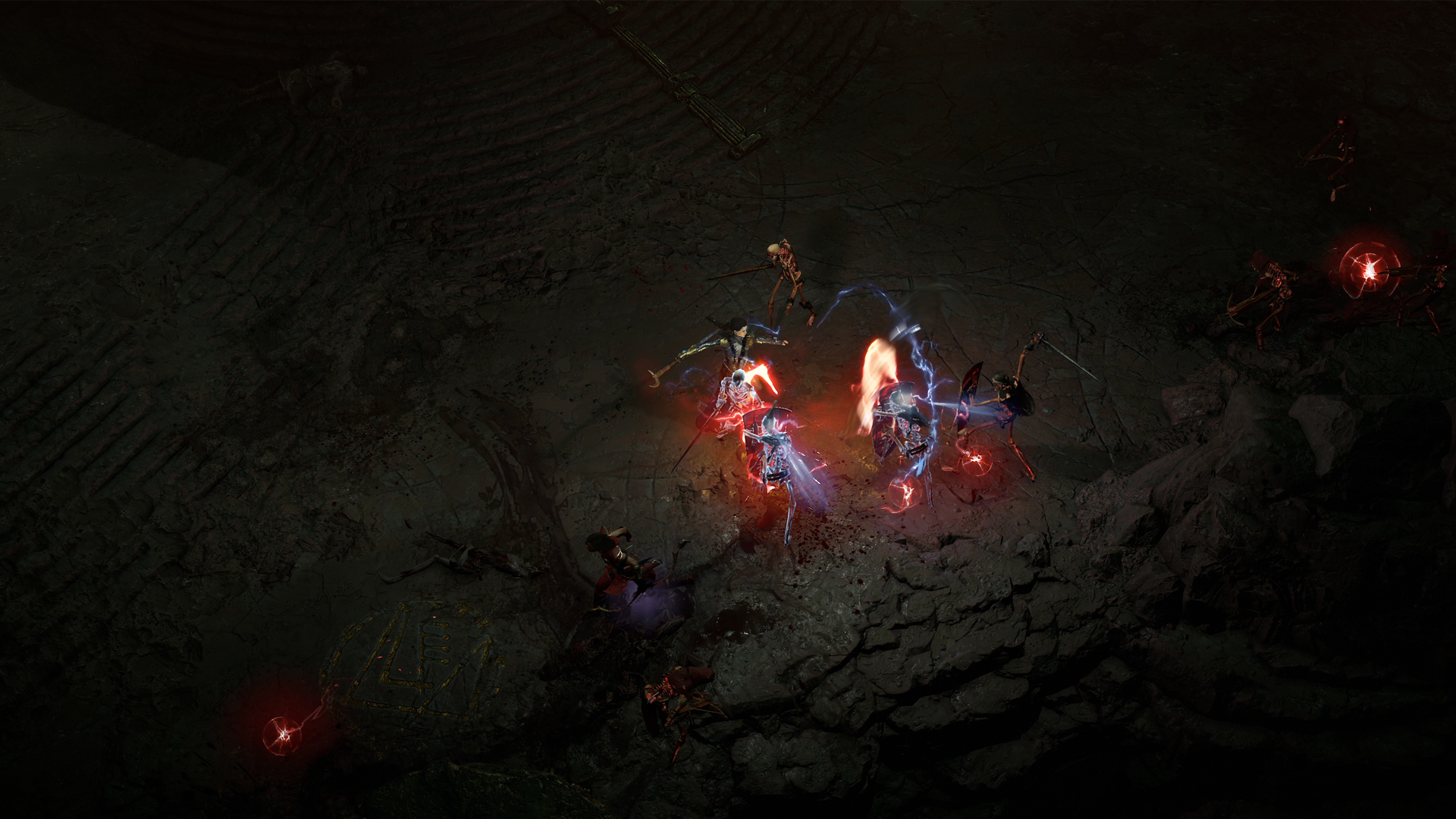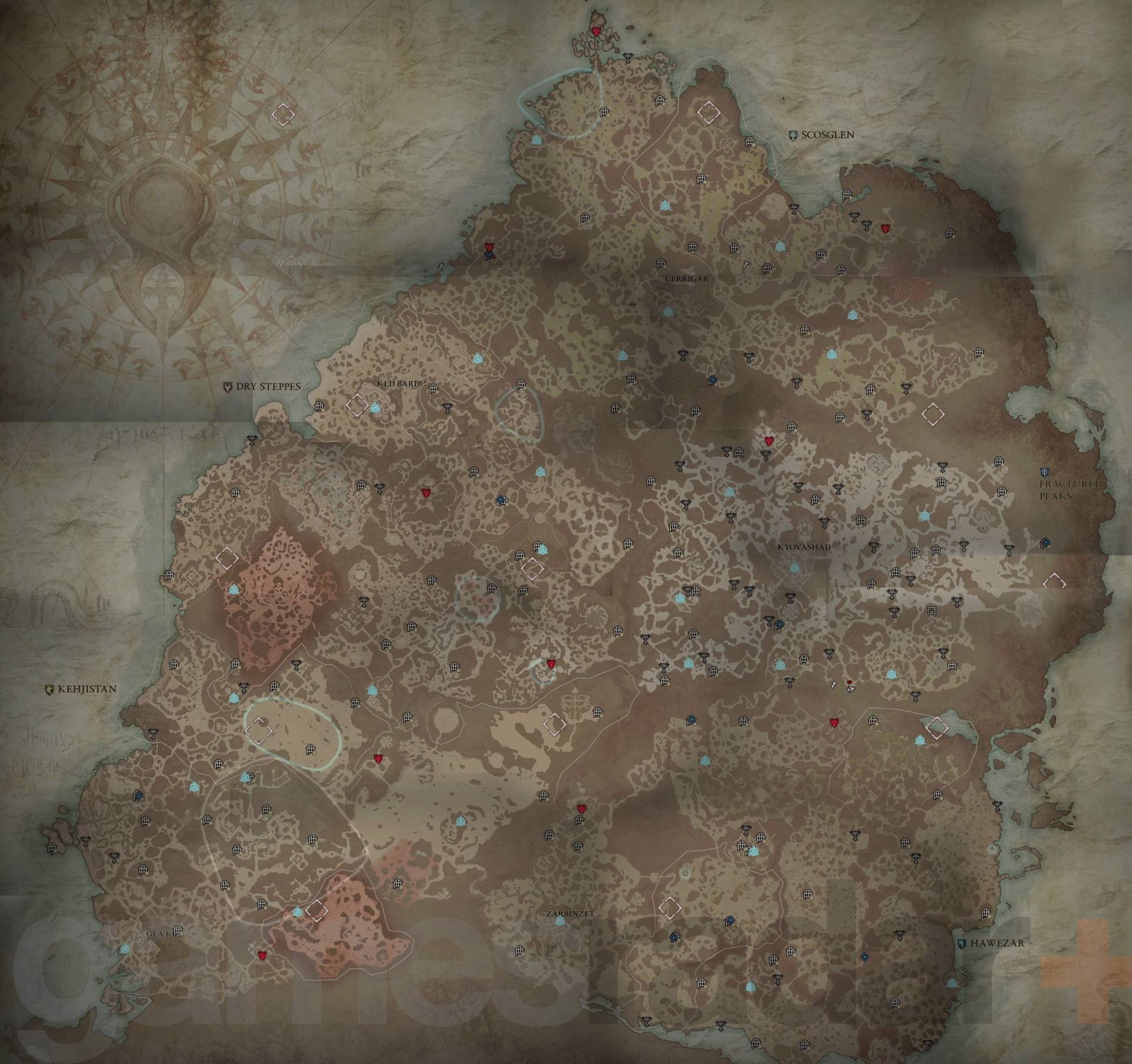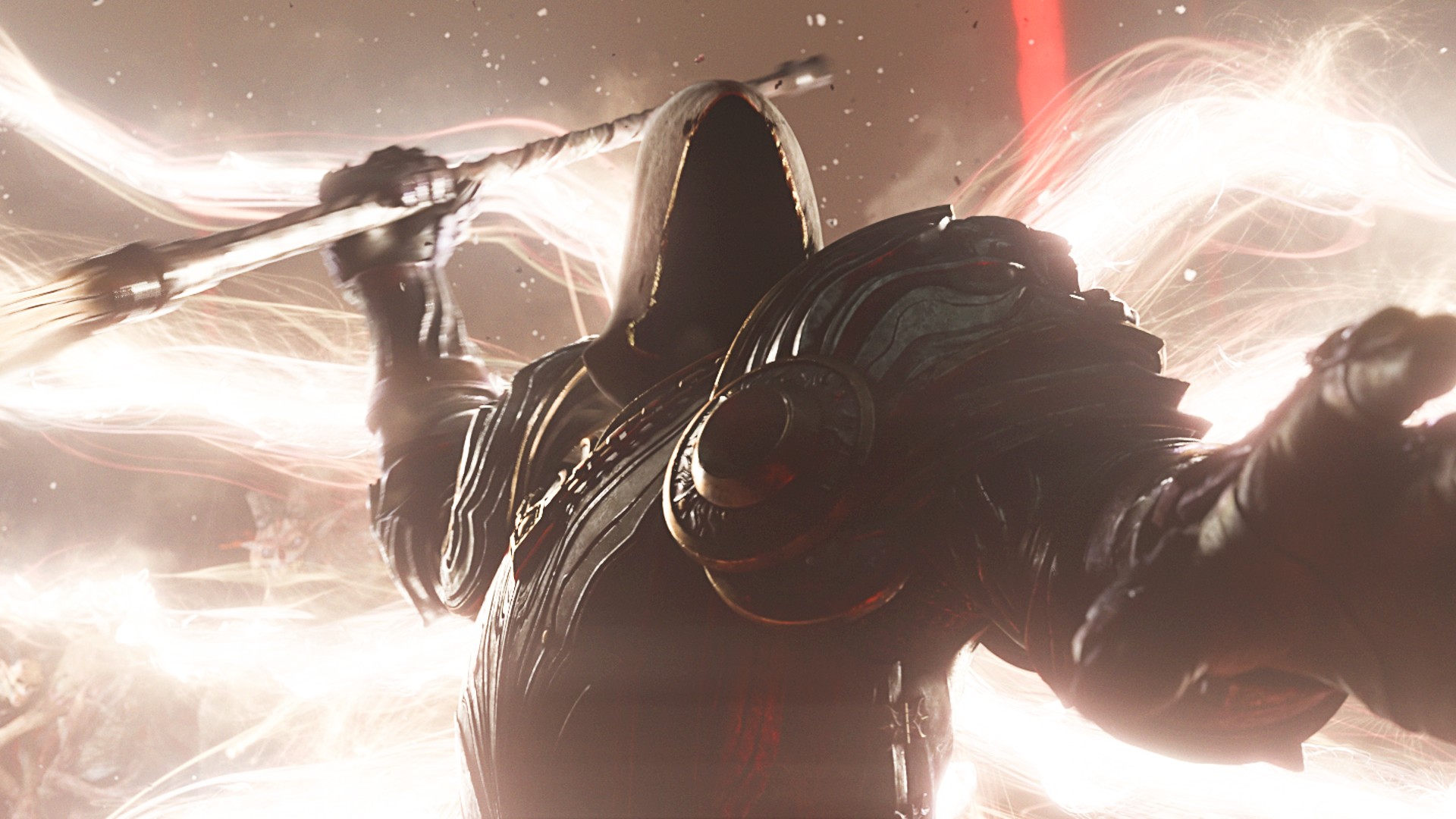
Diablo 4 PvP is the ultimate test of both your fighting skills and your character building abilities, as you take on other players in the combat arenas of Sanctuary. As player-versus-player fights aren't for everyone, this aspect of Diablo 4 is entirely optional, so you can avoid it completely if you'd rather focus on a single-player experience without risking your item durability in Diablo 4.
We recommend that you keep your powder dry and avoid PvP until you're closing in on the Diablo 4 max level cap, as the classes aren't necessarily balanced for player-versus-player battles. This means you need to be prepared to take every advantage you can into the Fields of Hatred, including upgrading your Diablo 4 health potions and ensuring you've set up the best Diablo 4 builds possible to target critical strike chance, evasion, and damage mitigation.
Where to find Diablo 4 PvP zones


Reaching the recommended Level 50 is quite the time investment, so make sure you know how long it takes to beat Diablo 4!
The Diablo 4 map is open from the beginning, with Blizzard having injected it with light MMO sensibilities to ensure that you're able to encounter other players outside of set Diablo 4 co-op parties. However you won't be able to damage, battle, or harm any random wanderer that you come across – you'll first need to head to specific PvP zones that are scattered across Sanctuary.
There are two Fields of Hatred, and each comes equipped with a recommended level of 50. You can easily discern these PvP viable areas on the map as they are painted red, whereas every other segment of regions are shades of beige. The two Fields of Hatred function similarly, and can be located in the following locations, but you may want to take our tips on how to level quickly in Diablo 4 before you head over to either:
- Dry Steppes region: Fields of Hatred (Lv. 50)
- Kehjistan region: Fields of Hatred (Lv. 50)
How to Mark For Blood in Diablo 4

If you want to enable your character for PvP you first need to activate a 'Mark for Blood'. This will mean that your character can be damaged by other players, where death will put your equipment durability and collected Diablo 4 Seeds of Hatred at risk. The process for marking yourself PvP ready is the same for using other Diablo 4 emotes. Press either E on your keyboard or up on the d-pad to bring up your quick wheel, then head to the customize menu to find the 'Mark for Blood' emote, and assign it to the wheel. Once you've selected the emote, you're good to go.
How to remove a Bloodmark in Diablo 4

The Fields of Hatred come infinitely more dangerous once you are Bloodmarked in Diablo 4. Not only does this make you viable for combat with other players, but you also run the risk of becoming Hatred's Chosen in Diablo 4. Let's talk about removing the Bloodmark in Diablo 4 first; to get rid of this title you'll have to navigate back to one of the towns which are adjacent to Fields of Hatred and visit the Altar of Cleansing. Interacting with the statue will remove the Bloodmark and mean you can navigate the PvP zone without being attacked by other players.
As for the Hatred's Chosen title, this is awarded to the player with the most kills in either of the Fields of Hatred zones, and once you've been marked your position will be tracked on the map for others in your instance. Purification Rituals are disabled while you are Hatred's Chosen, so the only way out is to survive for long enough – it's tricky, but there are massive rewards for doing so. If you want to abandon the Hatred's Chosen title, you'll need to leave the Fields of Hatred (and all of your unpurified Seeds of Hatred) behind.
How to refine Seeds of Hatred in Diablo 4

Seeds of Hatred are a unique resource type in Diablo 4. They can only be earned in the two Fields of Hatred areas, and can be accrued by killing enemies, opening chests, and exploring. Larger hauls of Seeds of Hatred can be found by slaying the powerful boss which rotates around the map or by killing another player, which will cause them to drop whatever Seeds they may be carrying. If you die or try to leave a Field of Hatred with your Seeds they will be purged, meaning that you lose them forever. If you want to reap the rewards of these areas you'll want to take your Seeds of Hatred to one of the various Altars of Extraction within the area – once there, activate a Purification Ritual which will slowly turn your Seeds into a spendable currency called Red Dust.
Where to spend Red Dust in Diablo 4

Once you have Red Dust in your inventory you are able to spend it at unique vendors in the towns adjacent to the two Fields of Hatred. Items are expensive at these vendors, but you'll want to see what they have to offer if you're a fan of farming in the areas. Cursed Scrolls can help up your survivability and damage output for short periods of time, a purveyor of Unsavory Oddities can will produce items with randomly-rolled stats and aspects, while the vendor selling Unconventional Steed Armor has some of the coolest accessories for your horse. Seriously, if you want to get your Diablo 4 mount apart from the rest, you'll want to spend some time in the PvP zones – regardless of whether you plan on farming for Seeds of Hatred or getting Bloodmarked to ruin other player's days.
© GamesRadar+. Not to be reproduced without permission
Weekly digests, tales from the communities you love, and more

Josh West is the Editor-in-Chief of GamesRadar+. He has over 15 years experience in online and print journalism, and holds a BA (Hons) in Journalism and Feature Writing. Prior to starting his current position, Josh has served as GR+'s Features Editor and Deputy Editor of games™ magazine, and has freelanced for numerous publications including 3D Artist, Edge magazine, iCreate, Metal Hammer, Play, Retro Gamer, and SFX. Additionally, he has appeared on the BBC and ITV to provide expert comment, written for Scholastic books, edited a book for Hachette, and worked as the Assistant Producer of the Future Games Show. In his spare time, Josh likes to play bass guitar and video games. Years ago, he was in a few movies and TV shows that you've definitely seen but will never be able to spot him in.


